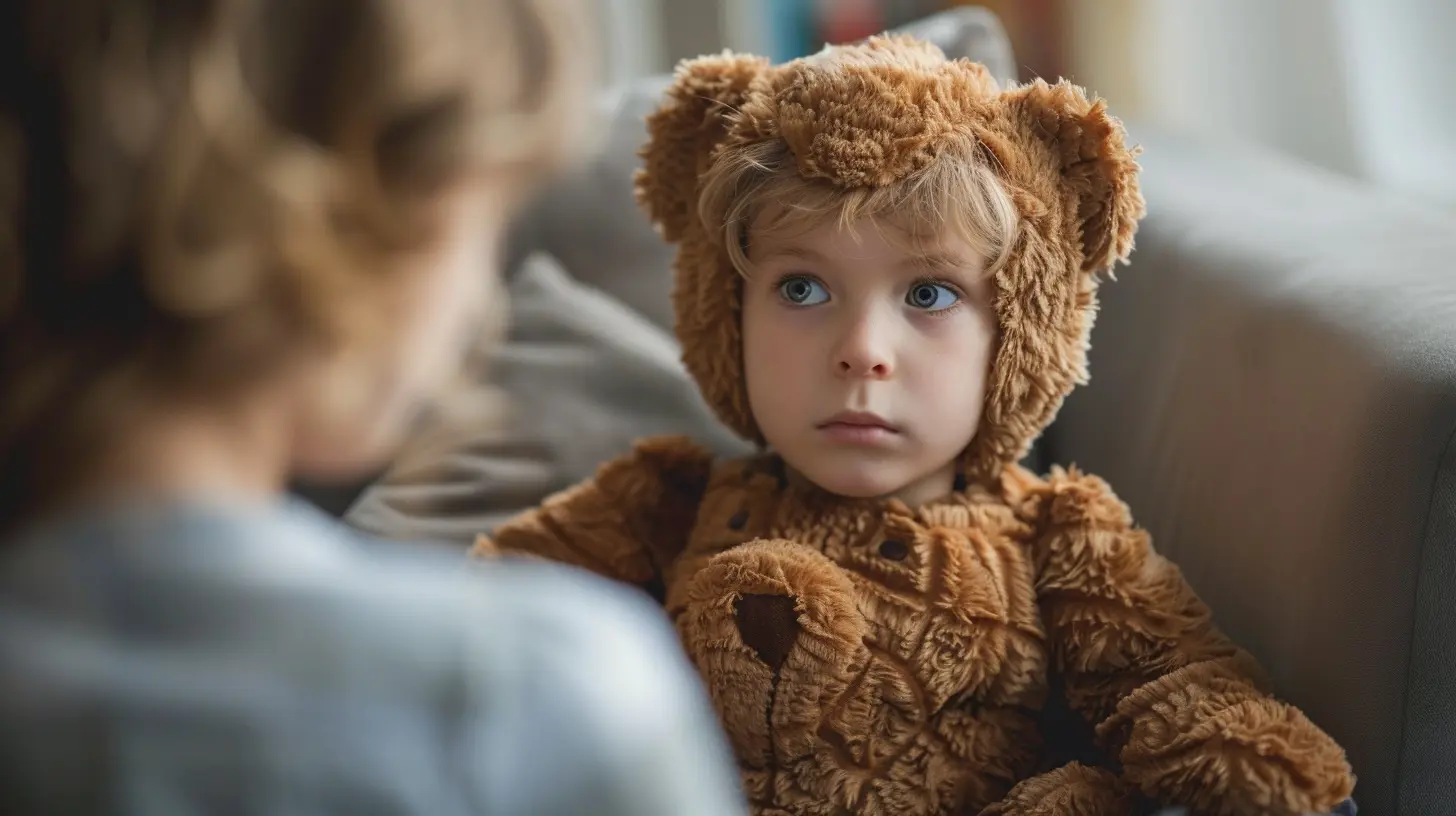How to Talk to Your Child About Their Mental Health Diagnosis
1 June 2025
Talking to your child about their mental health diagnosis can feel like navigating a minefield. You want to get it right—be open and supportive without causing fear or confusion. It’s a heavy topic, no doubt. But here’s the thing: if you’re reading this, you’re already doing something right. You care, and that makes a world of difference.
In this guide, we’ll walk through how to have that conversation with love, honesty, and empathy. It’s not about scripting a perfect speech—it’s about creating a safe space where your child feels seen, heard, and understood.
Why This Conversation Matters
Let’s face it: mental health is still surrounded by stigma, especially when it comes to kids. That’s why your child needs you to be their anchor. When they’re battling overwhelming thoughts or emotions, knowing they have your full support can be the difference between coping and crumbling.Children are more intuitive than we often give them credit for. Even if you never say a word, they’ll pick up on tension, doctor visits, or medication. Leaving them in the dark could lead them to fill in the blanks with worst-case scenarios. Being honest—on their level—gives them clarity and control.
It's All About Timing
So, when’s the right time to talk? There’s no one-size-fits-all answer here. But ideally, it’s when things are relatively calm—no major meltdowns, doctor’s appointments, or frustration in the air.Think about a quiet evening, maybe after dinner or during a weekend walk. Carve out time when you both can focus without distractions. You want your child to feel that this conversation matters and that you're not just squeezing it in between school pickup and soccer practice.
Prepare Yourself First
Before you talk to your child, take a deep breath and get your own thoughts in order.- Understand the diagnosis: Read up. Ask the therapist or psychiatrist questions. Make sure you grasp the basics well enough to explain them in simple terms.
- Check your emotions: Are you feeling scared, sad, or uncertain? That’s okay. Just be mindful of how those feelings might come through when you're talking to your child.
- Practice your words: You don’t need a script, but having a rough idea of what you want to say can help you stay calm and centered.
Remember, your child takes emotional cues from you. If you’re panicked or hesitant, they’ll feel it. If you’re calm and compassionate, they’re more likely to feel safe.
Use Simple, Honest Language
Kids don’t need fancy medical terms or sugarcoated metaphors. What they need is clarity. Use simple, age-appropriate language. Be honest but gentle.Here are a few examples:
- For a child diagnosed with anxiety:
“You know how you’ve been feeling really worried lately, even when nothing scary is happening? That’s something called anxiety. It’s not your fault, and it doesn’t mean you’re broken. It just means your brain is having a tough time turning off the ‘worry switch.’ But we’re going to help you with that.”
- For a child dealing with ADHD:
“You’re really smart and full of energy, but sometimes it’s hard for your brain to sit still or stay focused. That’s called ADHD. It’s something a lot of kids have, and there are ways we can make things easier for you.”
Avoid saying things like “you’re sick” or “something’s wrong with you.” The goal is to explain the diagnosis without making it their identity.
Encourage Questions (And Be Ready for Them)
After you share the diagnosis, pause and let your child process. Then ask: “Do you have any questions?” Be patient. Some kids will want answers right away. Others may need time.They might ask:
- “Is this my fault?”
- “Will it ever go away?”
- “Do my friends have to know?”
- “Will I have to take medicine forever?”
Answer as honestly and simply as you can. And if you don’t know the answer? That’s okay too. Say, “That’s a great question—I don’t know right now, but I’ll find out. We’re in this together.”
Normalize Their Feelings
Don’t expect your child to say, “Oh okay, cool.” They might feel sad, angry, scared, or even relieved. All of those responses are valid.Let them know it’s okay to feel that way. Tell them, “It’s normal to feel confused or upset. This is a lot, and we can talk about it as much as you need.”
You can even bring in stories (real or fictional) about other kids who have faced similar challenges. Let them see they’re not alone—and that people with mental health diagnoses can thrive.
Reaffirm Your Love, Constantly
This might seem obvious, but it needs to be said—again and again.Tell your child:
"You are not your diagnosis. You’re still the same amazing, funny, smart, and creative person. Nothing about how I feel about you has changed."
Children worry that they’re disappointing you. They wonder if they’re a burden. So be a broken record with your love and reassurance. Repetition builds trust.
Involve Them in Their Care (When Appropriate)
Depending on their age and maturity, include your child in some decisions about their care.Ask things like:
- “Would it help if we made a little chart for your meds?”
- “Do you want to help pick out a journal to write down your feelings?”
- “Would music or drawing help when you feel overwhelmed?”
Giving them a sense of control helps reduce feelings of helplessness and makes them more engaged in their own healing journey.
Teach Them It’s Okay to Ask for Help
This is one of the most powerful lessons you can give your child. Asking for help is not weakness—it’s courage.Model this behavior. Talk openly about your own feelings, within reason. Say things like, “Sometimes I feel overwhelmed too, and talking to someone helps me feel better.”
Make it crystal clear that therapy, meds, or coping tools are nothing to be ashamed of. They are tools for strength, not signs of weakness.
Watch for Shame - And Gently Challenge It
Kids might feel embarrassed or ashamed after learning about their diagnosis. You may hear things like:- “I’m weird.”
- “No one else is like me.”
- “I wish I was normal.”
This is your cue to swoop in with compassion.
Reframe it:
“You’re not weird—you just see the world a little differently. And that can be a gift. The way your brain works can be tough sometimes, but it also makes you kind, creative, and unique.”
Share stories (including your own if relevant) that reinforce the message that mental health challenges are just one part of who they are—not the whole picture.
Keep the Conversation Going
This shouldn’t be a “one and done” talk. Your child’s understanding will grow and change over time. Keep the lines of communication open.Check in regularly:
“How have you been feeling lately?”
“Anything confusing or upsetting you that you want to talk about?”
Be present. Be curious. Be an active listener. Don’t just hear the words—tune in to what they’re really saying.
Don’t Go It Alone
You don’t have to be the expert on everything. Lean on therapists, school counselors, pediatricians—these folks are in your corner.And if you’re struggling with your own emotions around your child’s diagnosis? That’s nothing to be ashamed of either. Consider finding a therapist or support group for parents. You deserve support just as much as your child does.
Celebrate Their Strengths
Lastly, never forget to shine a light on your child’s positive traits. Mental health challenges may be part of the story, but they’re not the whole book.Is your child creative? Empathetic? A problem-solver? A deep thinker?
Celebrate those strengths. Show your child that they are more than a label. That their mind may work differently—but that difference can be their superpower.
Final Thoughts
Talking to your child about a mental health diagnosis definitely isn’t easy. But with a steady heart, open ears, and lots of love, you can turn a scary topic into a powerful, healing conversation.The most important thing isn’t saying everything perfectly—it’s showing up, being real, and reminding your child that no matter what, they are not alone.
We’re all human, after all. And we’re all just trying to understand ourselves a little better every day.
all images in this post were generated using AI tools
Category:
Psychological Disorders In ChildAuthor:

Eliana Burton
Discussion
rate this article
2 comments
Valentina Mahoney
Empathy and openness foster trust; approach conversations with love and patience.
June 8, 2025 at 4:42 PM

Eliana Burton
Thank you for your insightful comment! Empathy and patience are indeed crucial in fostering trust and understanding in these important conversations.
Kinsley Simmons
This article offers invaluable insights for parents navigating the sensitive conversation about mental health diagnoses with their children. Your approach can empower them, fostering understanding and resilience. Remember, open dialogue nurtures trust and support, allowing your child to feel heard and validated. Keep up the great work!
June 1, 2025 at 3:38 AM

Eliana Burton
Thank you for your thoughtful feedback! I'm glad you found the insights helpful for fostering understanding and support.


